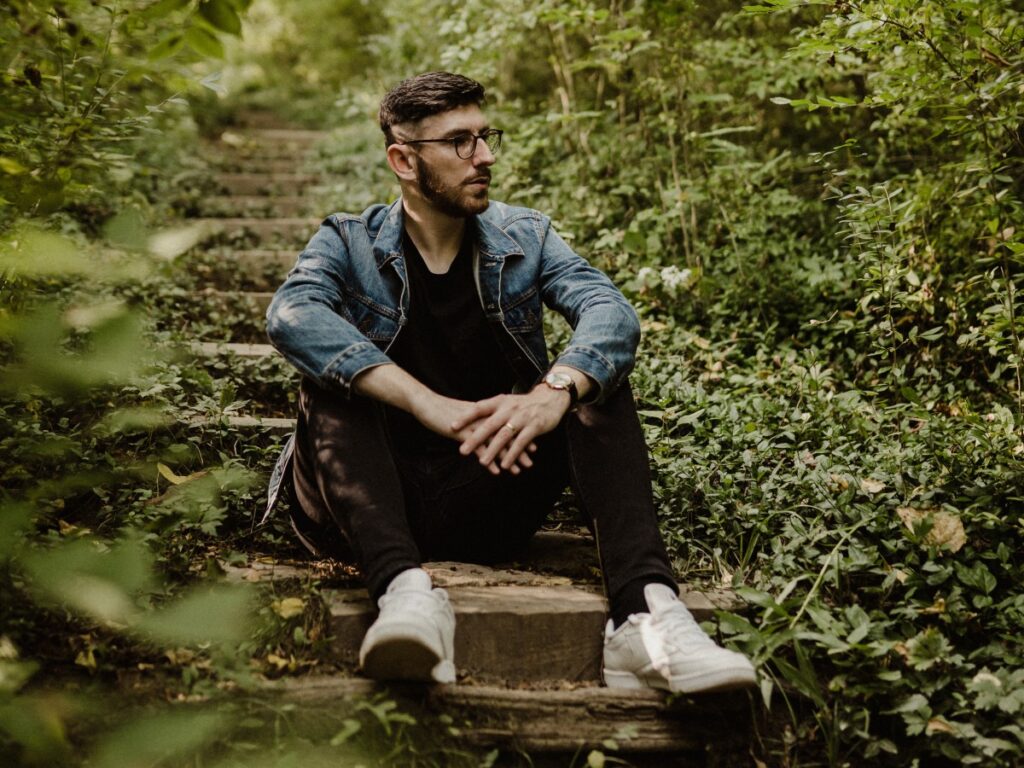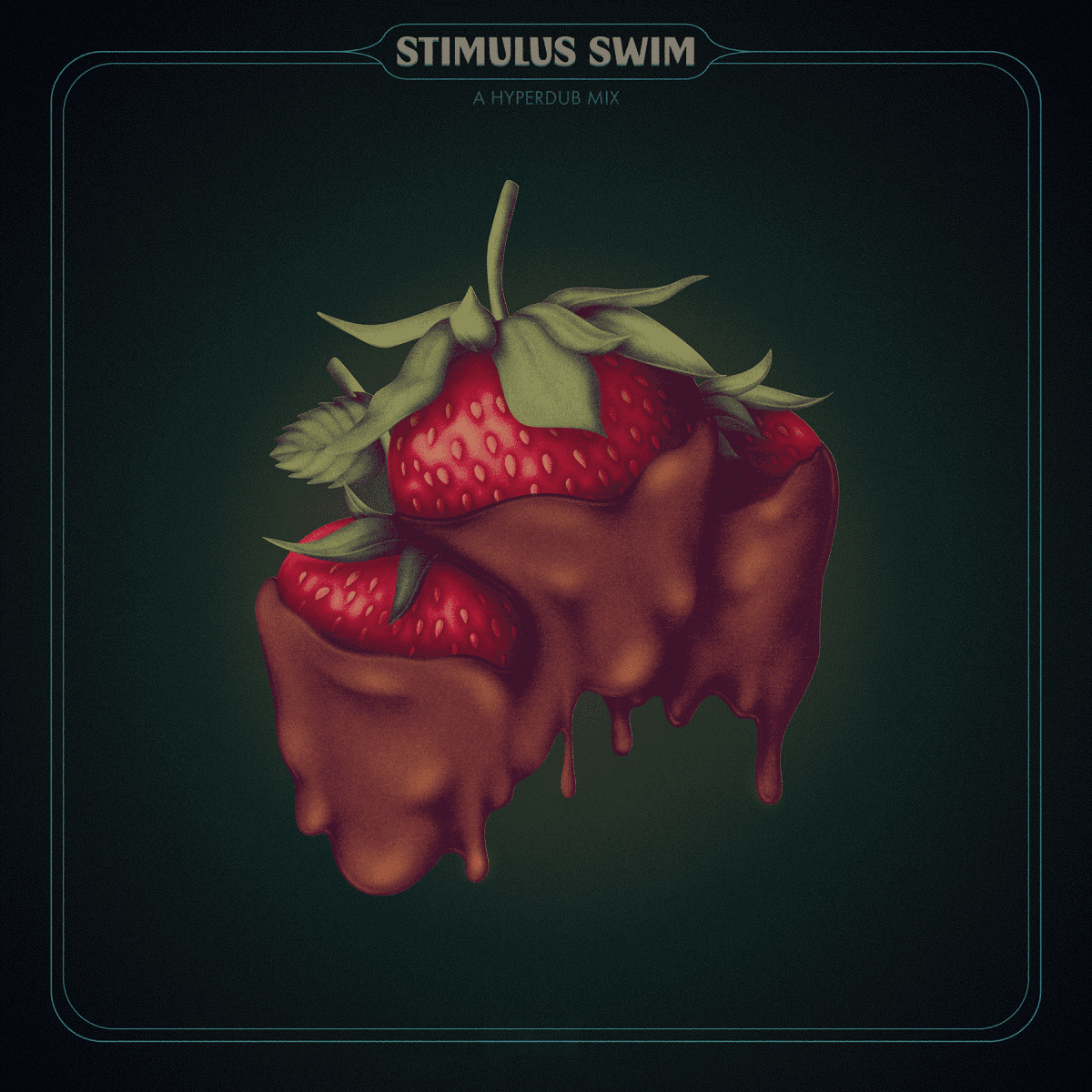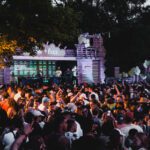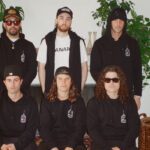UK-bred / Cincinnati-based producer Tom Marshall aka Marsh has released his new album Lailonie. The Anjunadeep stalwart has become one of the label’s more important signees over the past few years, culminating in his new album. Every artist loves to say that a piece of work is personal, but that adjective really drives home for this LP.
The album and its title track came together in the face of tragedy, the loss of his mother and law. It also channels the emotions and culture shock of moving to a new country, the US and Cincinnati, specifically. This has all been compounded by COVID and his wife being a nurse, who has been on the front lines of the battle against the virus. The LP is named after his wife – Lailonie is her middle name.
Lailonie on the whole is serene and beautiful. A blend of synths, piano pads, strings and even the occasional bird chirping blends together with gentle percussion and drums to create soothing deep house that flows effortlessly from start to finish. This is an album that is as easy to listen to as the cover art would suggest.
To get a better idea of how this record was created, we asked Marsh to take us under the hood for a How It Was Made feature, showing off the gear used to make this album. Dive into the production process with each piece of hardware and software below.
Get your copy of Lailonie here and listen as you read. The rest is written by him.
Background:
I’ve never had tons of money to put into studio hardware and analog synths. Instead, I’ve invested in the bare studio necessities. For me these are a solid workstation, DAW (I use Logic Pro X), an audio interface, a good pair of studio headphones and a MIDI keyboard. I’ve later invested in a number of software synths and plugins that have become studio essentials.
Workstation

Studio
Marsh
Nothing kills the creative flow more than projects that keep crashing. The album was produced 100% on a 2014 quad core i7 iMac. For the most part, this ran all my projects smoothly, but I started to encounter some slowness in the final stages of album development. I’ve recently upgraded to a 10-core i9.
Monitoring
I have a pair of Genelec 8030c studio monitors but I’ve never been able to use them to their full potential due to poor room acoustics. Even with acoustic treatment foam installed in key areas, the sound coming out of the monitors cannot be trusted 100%. If I mixed a track solely on my monitors, I’m confident it would sound terrible on every other listening system.

Sonarworks Reference 4
Marsh
Sonarworks has become a software solution I cannot live without. It drastically improved the way my monitors sound in my room and fixed problems in my headphones. However, I’m still not 100% comfortable relying solely on my monitors and room acoustics for mixing. When I’m starting a track, programming synth sounds, selecting sounds and samples that will gel and when I’m creating a final mixdown I rely on my Massdrop x Sennheiser HD 6XX Headphones. The Genelecs give me a rough indication of how the music might punch through in the club.
Roland System-1

Roland System 1
Marsh
I picked up Roland’s System-1 in 2016. Over time, this synth has become an essential part of my setup. If I could only have one keyboard it would be the System-1. The only setback is that the keys are not velocity sensitive. However, this often comes in handy when I’m punching in track elements that sound best to me with a consistent velocity i.e. drums and basslines. The System-1 is the perfect size controller to have right next to me on the desk and the hands-on aspect has taught me a large part of what I know about programming sounds. It’s a great synth in it’s own right but I’m mostly using it to control Roland’s SH2, SH101 and PROMARS software synths. The System-1 seamlessly maps and controls every knob on these synths and I’ve used it to program the majority of the sounds on the album. It’s perfect for basslines, leads and arpeggios.

SH-2
Marsh

SH-101
Marsh
Native Instruments Komplete Kontrol S49 MKII

Marsh
I picked up a second hand Native Instruments Komplete Kontrol S49 MKII shortly after moving to the States. I’m a big fan of the entire NI Komplete package. I’ve used almost everything it has to offer on the album. Notably, Absynth, FM8 and Battery are used on every track.

Absynth 5
Marsh

FM8
Marsh
As a pianist, having a keyboard with semi-weighted keys is important to me. It made complete sense to splurge that little bit more for a really solid midi keyboard that controls almost every knob found in Native Instruments software. The keyboard also offers control of many third party soft synths that I’ve used on the album. For example: u-He Diva. I wouldn’t say it gets used as much as the System-1, purely because there’s more knobs on the System-1 for quicker, hands-on tweaking but when I need to write piano or pads, the Komplete Kontrol is the only way.

u-he Diva
Mild Minds
Freesound.org
I discovered electronic music in the back of the car as Dad drove my family around the beautiful English countryside on our summer holidays. Nature enhances my listening experience and has become a key component of the music I’m writing. In my time at University, my apartment bordered Richmond Park, London. As I cycled through the park, the sound of birds would spill into the music playing in my headphones. The park’s parakeets were the backdrop to the music I was writing in the studio. This always added something real and relatable to the electronic music I was writing. Freesound.org is an essential resource that I use to find gorgeous field recordings of any environment I wish to feature as the backdrop. You’ll hear nature setting the scene for every album track.
Recording

sE2200 Studio Condenser Microphone
Marsh
I recently picked up an sE2200 Studio Condenser Microphone which replaces the sE2000 that I used to record my vocals on "Lailonie," "Healer," "Amor," "Wasn’t Enough" and ‘There For Me." I also used the sE2000 to record Mariel Beausejour on "Don’t Wait." I’m no lyricist or song-writer. Vocal lines are often spontaneous and in the moment. The vocals bring another level of real-life to an electronic, synthesized backdrop but I like to keep them simple, catchy and to the point on my records. For example, the line: "When I think of you" from "Lailonie" is possibly one of the most memorable moments on the entire album. Vocals get recorded via the Focusrite Clarett 2Pre audio interface. I love the sound and build quality of this small unit and I’ve still not had a need for more than two preamps.

Focusrite Clarett 2Pre
Marsh
Notable Software Synths
Sonic Academy’s Kick 2 has recently cemented itself as a studio staple. It massively upgraded the kick drums on the album. This is largely thanks to a technique I discovered that uses Kick 2 to recreate favorite kick samples by synthesizing the sub and blending this with the original sample’s attack. This plug-in has brought a whole new level of control and flexibility to shape kicks to fit my mixes. I won’t turn back to the limitations in the previous samplers I was using to trigger my kicks.
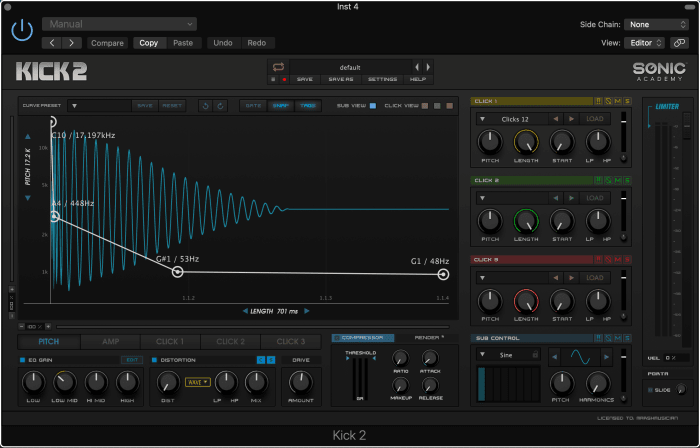
Kick 2
Marsh
That said, Battery 4 is an essential I use on every record. Battery has some incredible drum hits out of the box but I’m mainly using it to trigger the majority of one-shot drum samples I bring into play. I’m using this in collaboration with Logic’s Sampler, formerly EXS24, to convert audio loops into midi. This offers so much extra flexibility with my loops. I can change track BPM retaining sample quality, cut out samples I like, delete parts of loops I dislike and even rearrange entire drum loops.

Battery 4
Marsh
I have to mention two final soft synths used on every album track: Lennar Digital’s Sylenth1 is one of the greatest soft synths on the market, still to this day. It’s so quick to get a beautiful sound out of it. It’s behind a lot of the pads, leads on the album and it’s big moment is the LFO bassline on "My Stripes." Finally, I love Alchemy for pads and sounds that subtly modulate over time.

Sylenth1
MiNDTRiX


